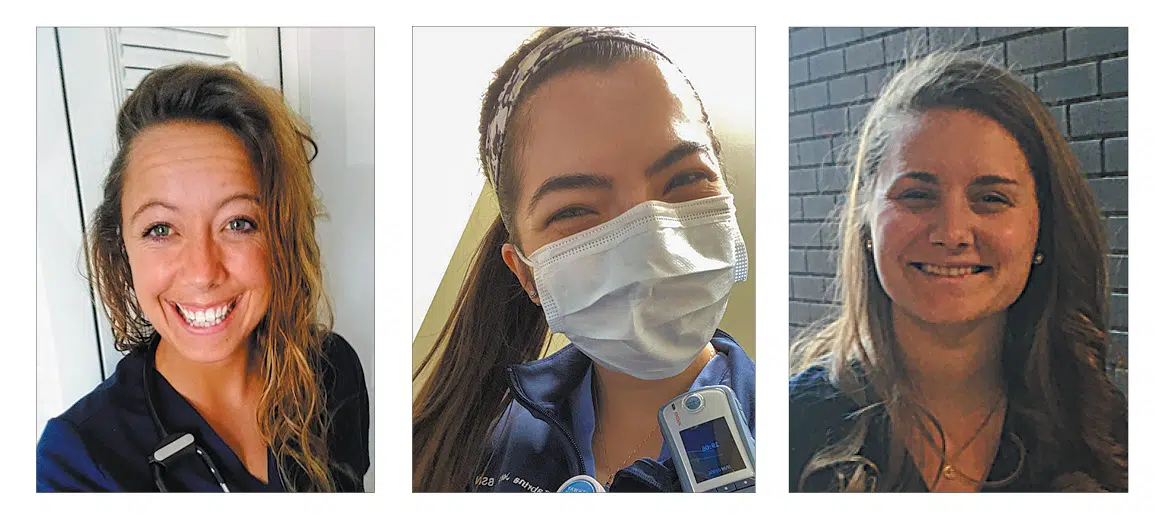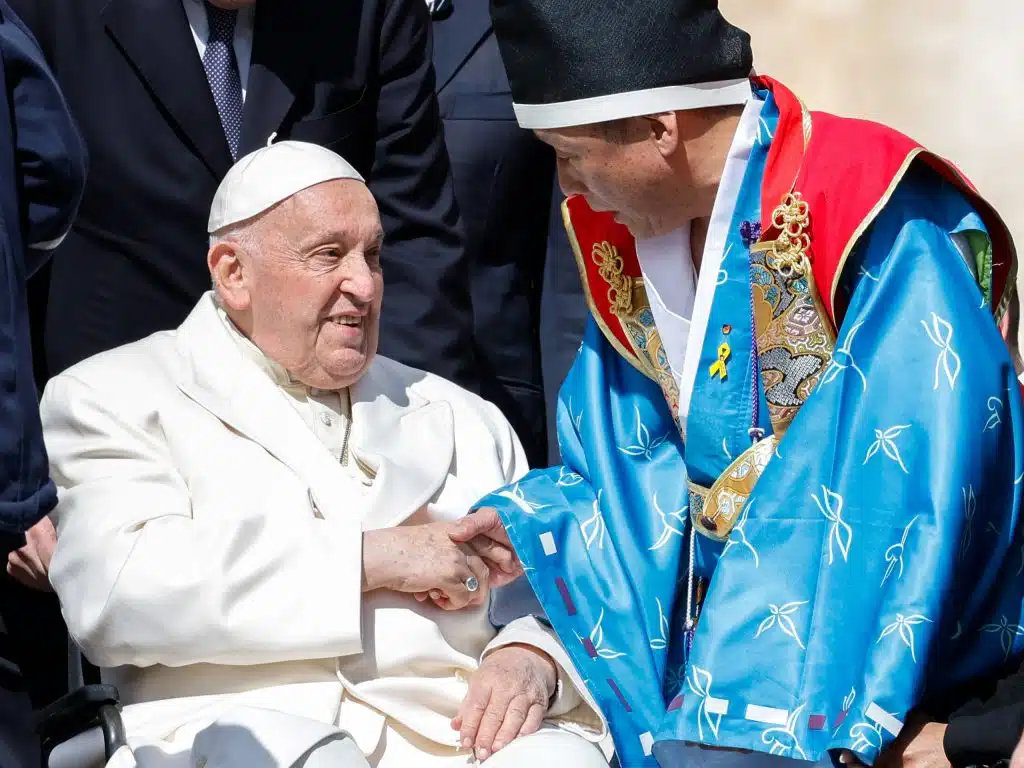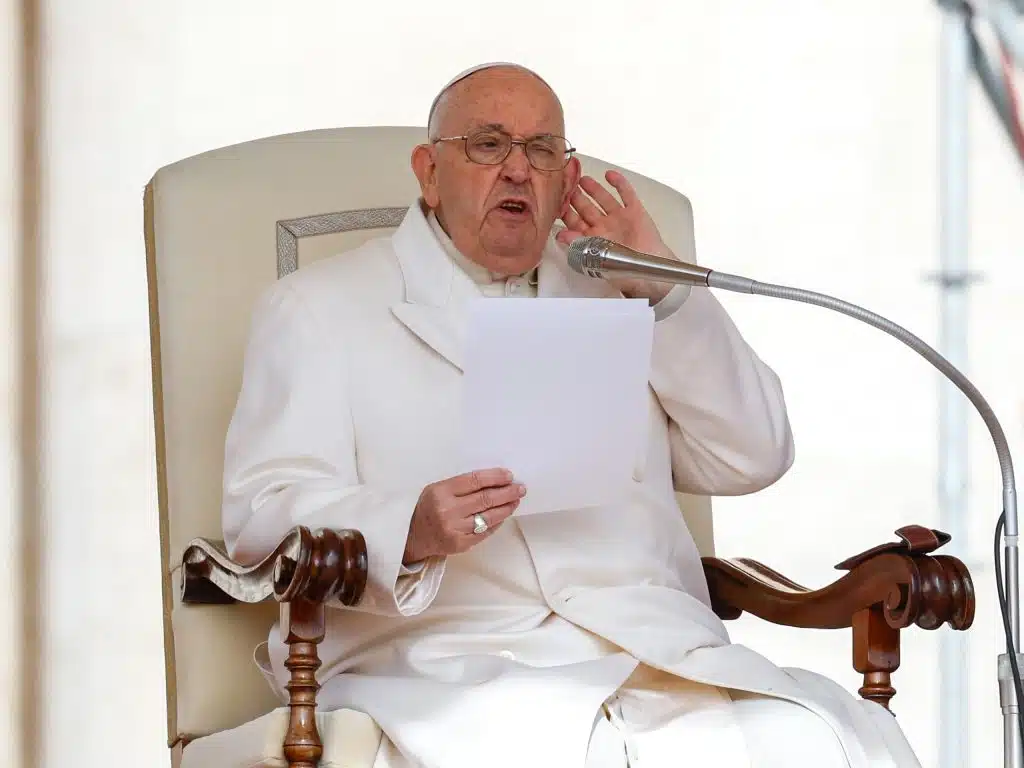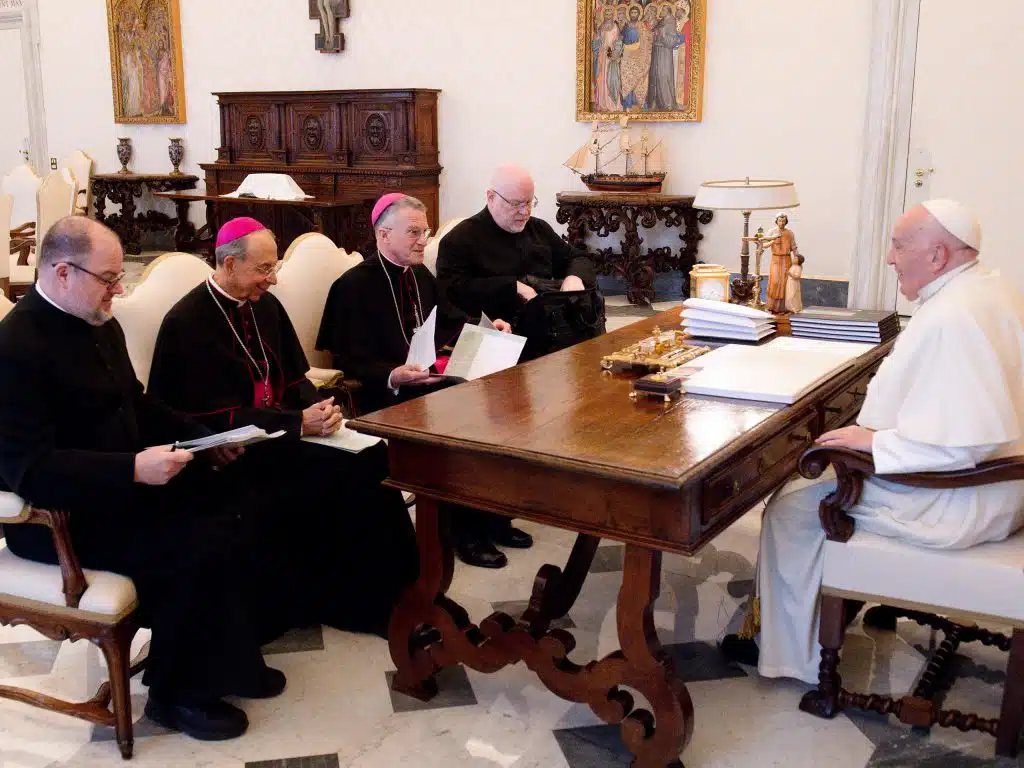AnnaMaria Masteller’s nursing career began March 23, 2020. She had expected her first year of nursing to be challenging, but she hadn’t expected to start at Inova Fairfax Hospital during a global pandemic. As with other health care professionals, she’s had to juggle learning about a new disease and treating patients who are separated from their loved ones while trying not to contract or spread the virus.
But Masteller and other local Catholic nurses and doctors say their faith has made the difference in the midst of hardship and uncertainty. “I just don’t know how I would do it if I didn’t have this understanding that God is in control,” said Masteller, a parishioner of St. James Church in Falls Church. “I feel like I have this little secret that I get to take with me every day, that I have this huge, powerful God on my side even though I’m just this new nurse.”
Sabrina Judy, a nurse at Medstar Hospital Center in Washington and a parishioner of Our Lady of Angels Church in Woodbridge, usually works on an advanced heart care unit. But since the COVID-19 outbreak, all of her staff has floated at least once to take care of patients on the COVID-19 wing. The patients she cared for had come from nursing homes and a group home, and for reasons unrelated to COVID-19, all of them were nonverbal. “It was one of my busiest days I’ve had,” she said.
Dr. Anita Maybach’s routine also has been altered by the pandemic. Maybach works at a general practice office, in the emergency room of Fauquier Health Hospital and as the medical director of Heartland Hospice in Warrenton. At Heartland, she and the staff can no longer meet in person to grieve for the patients who die. At the doctor’s office, she meets patients outside in their cars if they’re experiencing viral symptoms. “I’m exposed at the ER all the time, so I don’t want the rest of my office staff or my patients exposed,” said Maybach, a parishioner of St. John the Evangelist Church in Warrenton.
The COVID-19 patients she sees experience overwhelming fatigue, shortness of breath, nausea, a dry cough and occasionally a rash, among other symptoms. “The hard thing about COVID right now is we treat the symptoms but every day we’ve got to review what we’ve learned,” she said. “Six months ago, in the whole history of this world as far as we know this virus didn’t exist, so every day different treatment ideas come out.”
In addition to the physical maladies, many doctors and nurses also tend to the emotional needs of their patients. “I see patients struggle a lot with the isolation,” said Katie Ellefson, a nurse at Inova Fairfax who attends St. Rita Church in Alexandria. “They are cooped up in their rooms with only us to interact with throughout the day and night, which is incredibly lonely. It’s easy to get caught up in all the tasks we have to complete but I’ve found how grateful these patients are to just have us in there to chat for a little bit about their lives and families, things they are worried or stressed about.”
Communication is difficult when covered head to toe with personal protective equipment, but the health care workers are grateful to have it. Judy said she had an ample supply of personal protective equipment when she rotated to a COVID-19 wing. Maybach says she is given one N95 mask for many shifts but wears different masks on top of it. She disinfects a pair of reusable goggles, and also has access to caps and gloves. Masteller is given a surgical mask and fresh scrubs to wear when she arrives at the hospital. She adds more layers as the risk increases.
“When we go into a (COVID-19) patient’s room, we put a gown on, gloves and then these helmet type things, basically like a huge face shield,” she said. “When we come out, we take off those gowns, we throw them away in a special trash can.”
Even with all the precautions, the health care workers know they could carry the disease home. Maybach and her husband, who is also an ER doctor, considered sending their two teenage girls to live with relatives nearby. “But we weren’t sure how long it would last, and we just decided that as a family, we’d all just rather be together,” she said. “Every day when I leave the ER, I think to myself, thank God for the things that I have and thank God for the things that I don’t have.”
Masteller feels grateful to be serving others during the crisis. “It’s scary to see people in this condition, but people are getting better and leaving the hospital, so that is a (sign of) hope,” she said. “It does feel good to be able to be there with them and taking care of them, instead of at home, not even knowing what a COVID patient looks like.”
Ellefson sees her work as something given to her by God. “There has been a lot of panic and fear that has resulted from this. I think it would be very easy to feel the effects of that more if I didn’t have faith and trust that God put me here in this moment to do what I can to help the patients in my care in whatever small ways I can,” she said. “We are given countless opportunities every shift to brighten the lives of patients. And that makes my job very rewarding.”



